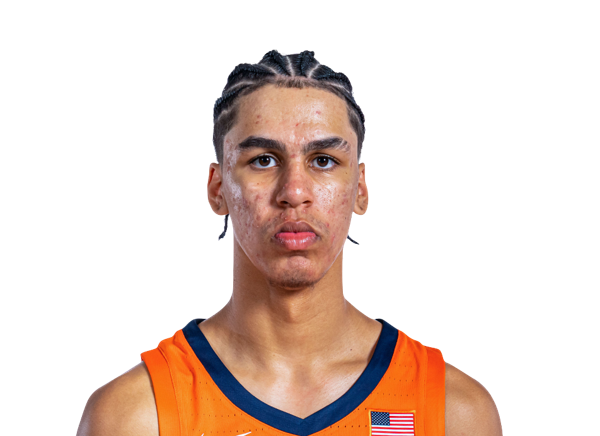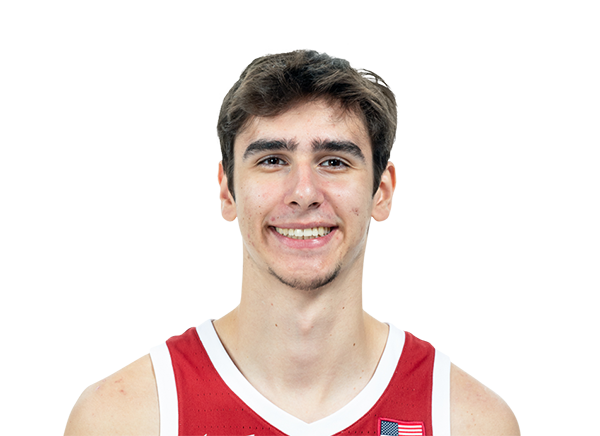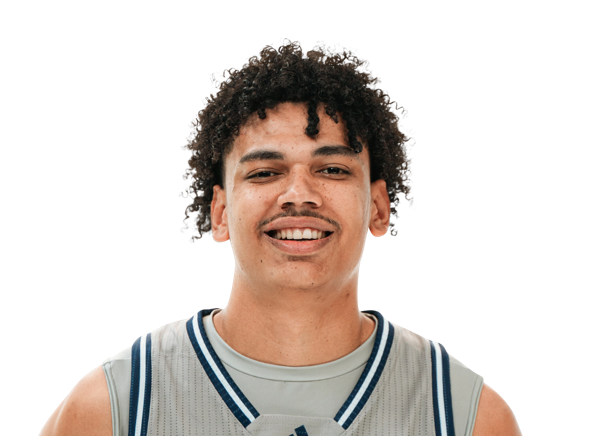Full Analysis
Offense
Will Riley is a 6’8” shot-creator with feel and rhythm, an intriguing combination in any class. He’s at his best when the offense flows through him, both on and off the ball, and while his scoring numbers aren’t efficient yet, the eye test reveals a more complex player than the numbers suggest.
Riley is a self-starter on offense, capable of getting into pull-ups from NBA range, attacking closeouts, and even improvising movement off screens. His off-the-dribble jumper, though inconsistent, is a real threat, particularly due to how quickly and confidently he fires, often over contests without flinching. Ironically, his percentages were better on contested pull-ups than on unguarded catch-and-shoots. It’s not about clean mechanics; it’s about rhythm, balance, and timing. Riley has all three when his game is flowing.
The isolation scoring flashes are especially exciting. Riley ranks in the 90th percentile on isolations, thanks to a fluid handle, confident shot creation, and a variety of ways to get to his spots. He uses stutters, crossovers, and change-of-pace to generate separation. At the rim, he’s surprisingly effective despite his lack of bulk, finishing 60% of his halfcourt rim attempts. He leverages long strides and subtle shifts in movement to slip past defenders, using touch more than force.
Perhaps the most underrated aspect of Riley’s game is his playmaking. His 16.1 AST% and positive assist-to-turnover ratio reflect genuine vision and processing ability. He can fire one-handed hook passes off live dribbles, lead cutters in stride, or make skip passes out of pick-and-rolls. He’s not just a scoring wing trying to pass; he’s a true creator, with a unique blend of passing feel and pace. As a secondary initiator, there’s real upside.
But Riley’s scoring efficiency holds him back for now. His shot selection leans heavily into self-created jumpers, which haven’t fallen consistently. His mechanics lack fluidity in spot-ups, and his shooting off movement needs more structure. He also needs to add strength to generate cleaner looks in traffic. Still, with his combination of audacity, volume, and touch, it’s easy to project growth as he matures.
Defense
This is where the risk profile emerges. Riley's defense, on paper and film, is the biggest red flag in his evaluation. The tools aren’t an issue: he’s 6’8” with a long frame and coordination. But physically, he’s not ready. At under 190 pounds, he gets bumped off spots easily, can’t fight over screens, and struggles with recovery after contact. Strong drivers move through him. Savvier cutters shake him with one decoy step.
Technically, his defensive stance is poor; often upright with poor weight distribution, and his lateral movement is underwhelming. He doesn’t disrupt much either, posting one of the lowest stock rates in modern draft history for a wing prospect. His steal rate (0.6%) and block rate (1.0%) are outlier bad, indicating low engagement or anticipation, even off the ball.
In short: he’s not just a below-average defender, he’s currently a liability. And there’s no switching versatility until his frame and fundamentals catch up. The good news? Defense is often about effort, strength, and reps. Riley tries, and he reads rotations decently. He just lacks the body and consistency to turn intent into impact. With a multi-year strength and developmental plan, there’s hope he can become passable. But it will take patience.
Looking Ahead
Will Riley is a bet on offensive upside, skill versatility, and frame projection. Right now, he’s a 6’8” wing with legitimate pull-up ability, playmaking instincts, and a feel for movement both with and without the ball. Those qualities alone make him a viable long-term NBA piece.
But the downside risk is equally real. His frame needs serious work. His defense is far from playable. And his jumper, while promising in volume and form, hasn’t been efficient. That’s a lot of ifs for a first-round prospect.
Still, Riley’s archetype is hard to find: a big wing who can dribble, pass, and shoot with rhythm and confidence. That’s the mold of players like Franz Wagner or Jaden McDaniels (albeit with less defensive juice and a different style). If a team can get him stronger, develop his off-ball defense, and rein in his shot diet, he could grow into a high-level complementary scorer or secondary initiator.
In a class thin on jumbo creators, Riley stands out. He isn’t ready yet, but there’s a version of him in 3 years that plays 30 minutes a night as a pull-up threat, connector, and creative secondary scorer on a playoff team. If you're swinging late in the first round, that’s a compelling gamble to take.



